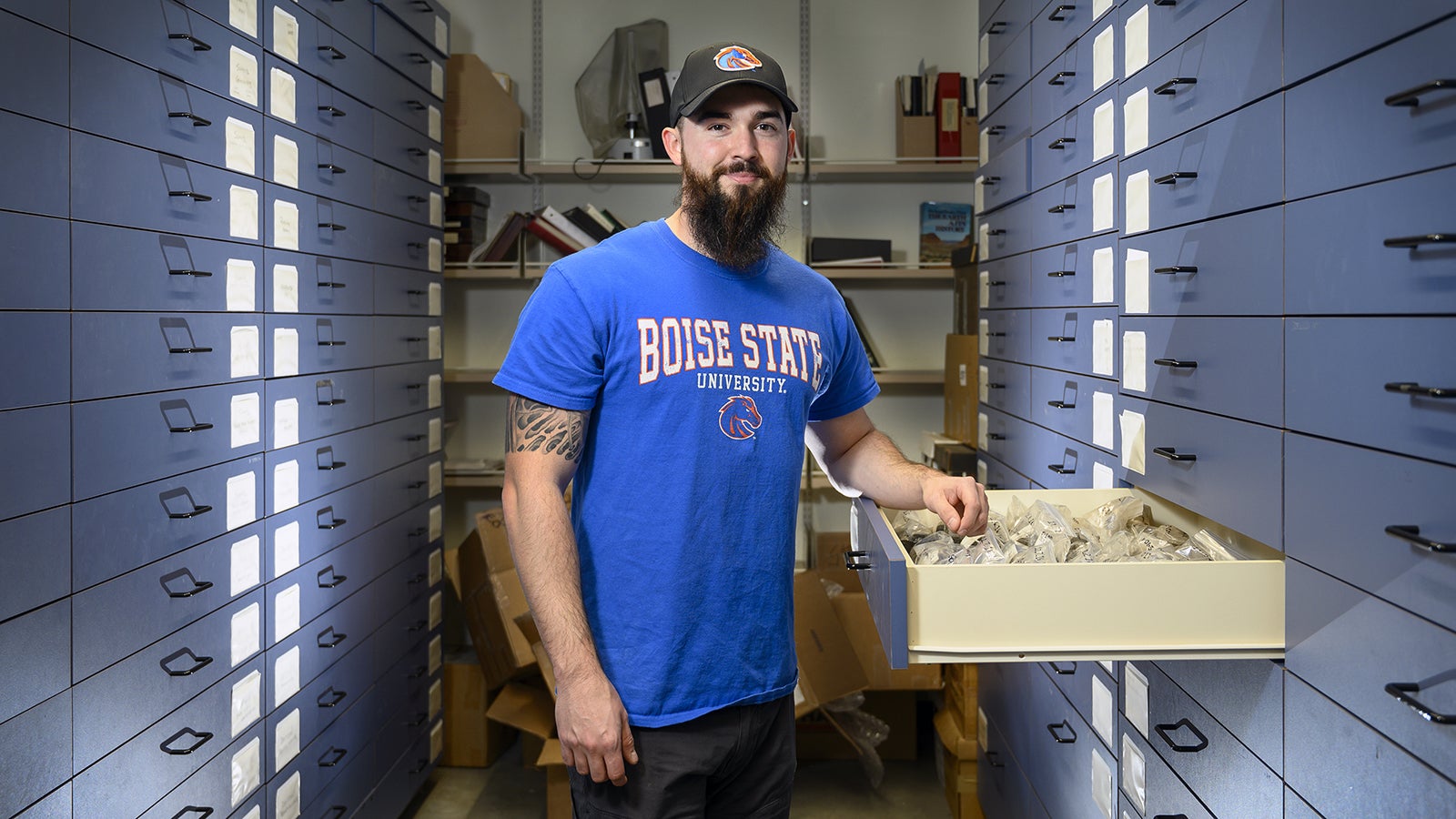
Holding up a glass slide with a sample of thinly sliced magma from the Llaima Volcano, Boise State graduate student Aaron Marshall points to the narrow, branching network of bubbles surrounded by crystals. Marshall collected the sample in Chile and it may hold the key to explaining the volcano’s uncharacteristically explosive eruption about 16,000 years ago.
“I think the gas bubble geometry is being controlled by the nucleation of all of these tiny little crystals,” said Marshall, who is working on his doctorate in geoscience. “The rapid crystallization stiffens the magma as it rises through the crust, preventing gas from escaping. As the magma continues to rise, pressure builds up that eventually causes the magma to fragment apart as though it were solid. Those are the two main factors you’d need for an explosive eruption — trapped gas and overpressure.”
The magma of Llaima is mafic, meaning that it has a low silica content and should therefore have low viscosity. Normally, gases are able to easily escape from this magma, resulting in lava flows or mildly explosive eruptions. However, when Llaima erupted, its explosiveness rivaled that of the 1980 Mount St. Helens eruption, defying expectation.

Marshall ventured to Chile for a month of research on Llaima in January 2019, and collected frozen magma samples from deposits around the volcano, and charcoal — the charred remains of trees that were destroyed during the eruption by hot gases and ash. Radiocarbon dating these remains can provide an accurate timeline of when the eruption occurred. Processing the magma to understand its composition and why the gases were trapped is highly specialized, but discovering what caused this kind of explosion is essential to informing hazard forecasting and resiliency for people living near active mafic volcanoes.
“At Lawrence Berkeley National Laboratory, I use a method called X-ray computed microtomography. A particle accelerator fires X-rays at a sample, which allows us to construct 3-D images of the crystal and bubble networks within the rock,” explained Marshall.
From these 3-D images, Marshall will be able to model the flow of gases through the sample and determine if the gases were being trapped inside the magma, resulting in the explosive eruption. Marshall has been working on Llaima for over two years, and credits Department of Geosciences faculty Dr. Brittany Brand, Dr. Mark Schmitz and Dr. Dorsey Wanless with challenging him to become the
geologist he is today. Prior to coming to Boise State, Marshall was a hard hydrogeologist. Volcanology was a totally new challenge.
“I started grad school with a seven- or eight-day field trip to Oregon to do field work for an advanced field methods class that was all volcanology,” said Marshall. “Brittany Brand told me ‘You’re going to have to take this class and I know that you’ve never done a single bit of volcanology in your whole life; don’t worry, you’ll get through it.’”
He did and has become a critical contributor to this science. Marshall’s research currently is supported by grants from National Geographic, the National Science Foundation Division of Earth Sciences and a Department of Geosciences Burnham grant.

–By Brianne Phillips